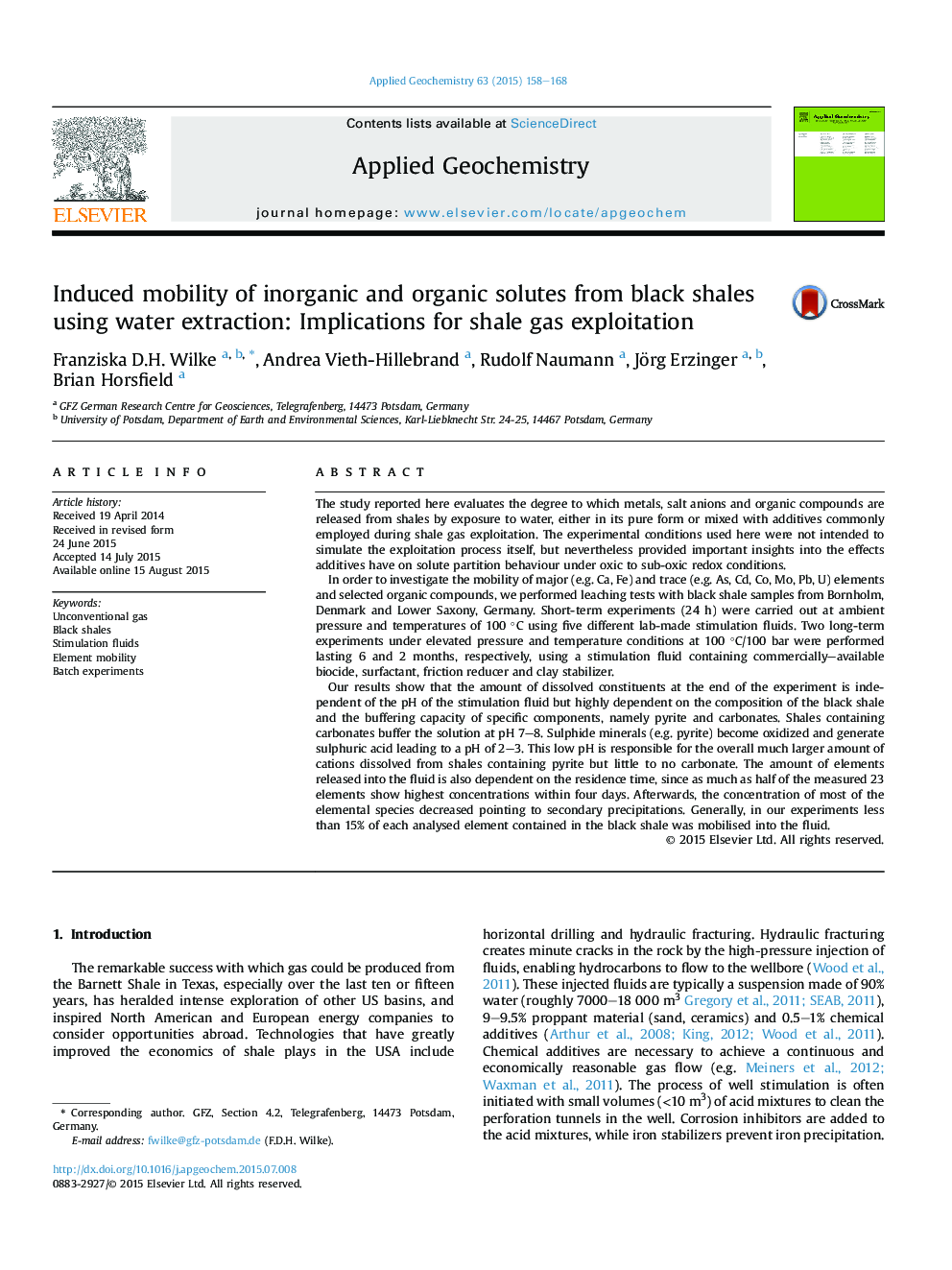| Article ID | Journal | Published Year | Pages | File Type |
|---|---|---|---|---|
| 6334934 | Applied Geochemistry | 2015 | 11 Pages |
Abstract
Our results show that the amount of dissolved constituents at the end of the experiment is independent of the pH of the stimulation fluid but highly dependent on the composition of the black shale and the buffering capacity of specific components, namely pyrite and carbonates. Shales containing carbonates buffer the solution at pH 7-8. Sulphide minerals (e.g. pyrite) become oxidized and generate sulphuric acid leading to a pH of 2-3. This low pH is responsible for the overall much larger amount of cations dissolved from shales containing pyrite but little to no carbonate. The amount of elements released into the fluid is also dependent on the residence time, since as much as half of the measured 23 elements show highest concentrations within four days. Afterwards, the concentration of most of the elemental species decreased pointing to secondary precipitations. Generally, in our experiments less than 15% of each analysed element contained in the black shale was mobilised into the fluid.
Related Topics
Physical Sciences and Engineering
Earth and Planetary Sciences
Geochemistry and Petrology
Authors
Franziska D.H. Wilke, Andrea Vieth-Hillebrand, Rudolf Naumann, Jörg Erzinger, Brian Horsfield,
